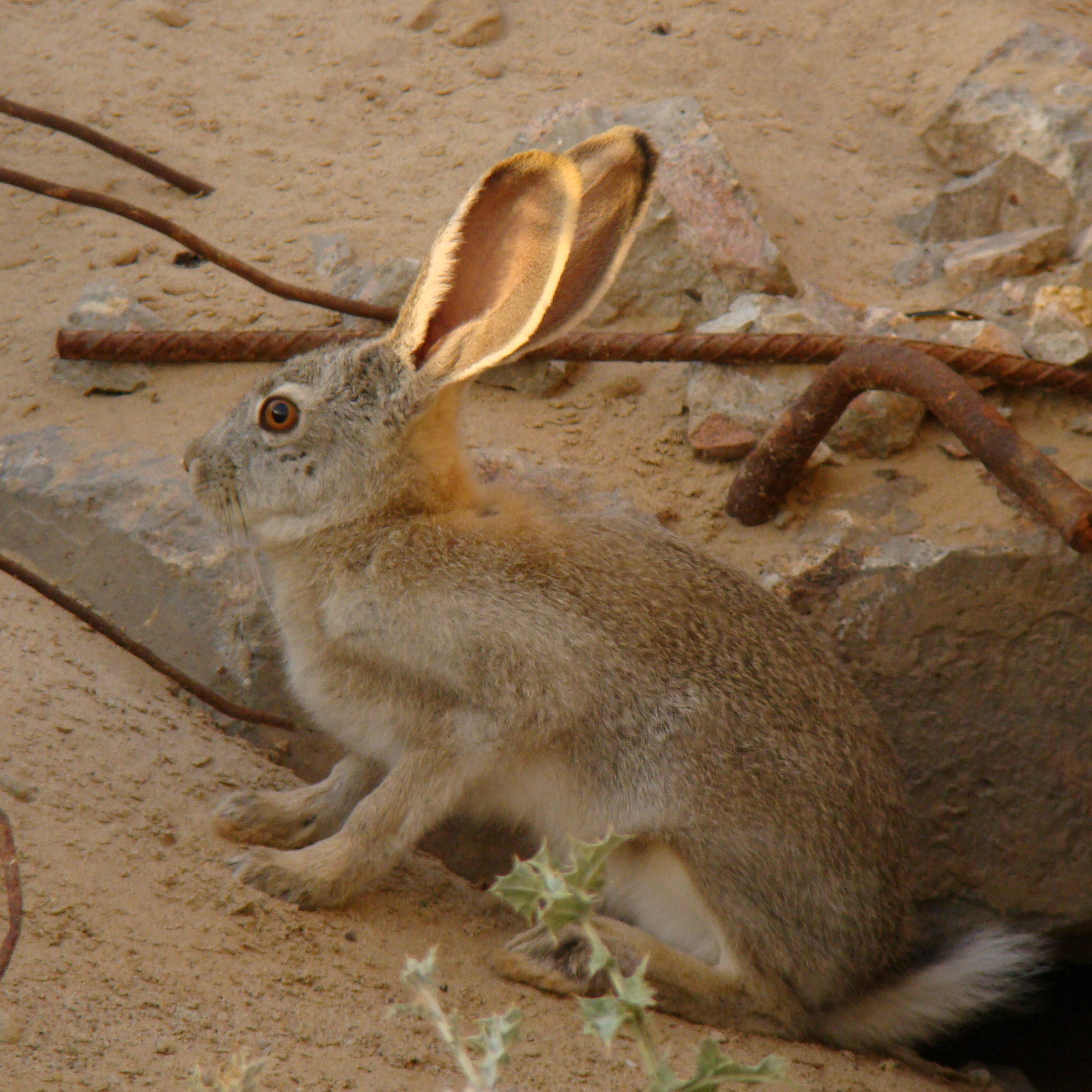Lepus Tolai on:
[Wikipedia]
[Google]
[Amazon]
The tolai hare (''Lepus tolai'') is a species of
 The tolai hare is a nocturnal species and feeds on grasses, herbaceous plants and roots. It does not dig a burrow except when it is breeding, but scrapes out a depression in the ground in which to lie; this scoop is shallow in hot weather but is deeper in colder conditions. Breeding takes place two or three times a year, with litters of two to six young being produced each time.
In the neolithic Yangjiesha site of Loess Plateau, signs of commensal behavior (taming) between local tolai hares and humans can be found.
The tolai hare is a nocturnal species and feeds on grasses, herbaceous plants and roots. It does not dig a burrow except when it is breeding, but scrapes out a depression in the ground in which to lie; this scoop is shallow in hot weather but is deeper in colder conditions. Breeding takes place two or three times a year, with litters of two to six young being produced each time.
In the neolithic Yangjiesha site of Loess Plateau, signs of commensal behavior (taming) between local tolai hares and humans can be found.
hare
Hares and jackrabbits are mammals belonging to the genus ''Lepus''. They are herbivores, and live solitarily or in pairs. They nest in slight depressions called forms, and their young are able to fend for themselves shortly after birth. The ge ...
native to Central Asia, Mongolia, and Northern
Northern may refer to the following:
Geography
* North, a point in direction
* Northern Europe, the northern part or region of Europe
* Northern Highland, a region of Wisconsin, United States
* Northern Province, Sri Lanka
* Northern Range, a ra ...
and Central China. It inhabits semi-desert
A semi-arid climate, semi-desert climate, or steppe climate is a dry climate sub-type. It is located on regions that receive precipitation below potential evapotranspiration, but not as low as a desert climate. There are different kinds of semi-ar ...
, steppe
In physical geography, a steppe () is an ecoregion characterized by grassland plains without trees apart from those near rivers and lakes.
Steppe biomes may include:
* the montane grasslands and shrublands biome
* the temperate grasslands, ...
s, rocky habitats, and forest meadows. It is relatively common, even in areas with heavy human disturbance, due to its fast reproductive rate. It is mainly active at dusk and at night but is occasionally active during the day.Aulagnier S.; P. Haffner, A. J. Mitchell-Jones, F. Moutou & J. Zima (2009) ''Mammals of Europe, North Africa and the Middle East'', A&C Black, London.
The taxon is formerly included with the cape hare.
Description
The tolai hare grows to a head-and-body length of between with a tail of . It is rather variable in colouration across its range. The upper parts are some shade of dull yellow, pale brown, or sandy grey with brownish or reddish stripes. The hip region is sometimes ochre or grey. The head has a pale, bare, greyish or ochraceous patch of skin surrounding the eye and extending forwards to near the muzzle and backwards to the base of the long ears, which have black tips. The underparts and flanks are pure white. The tail has a broad black or brownish-black stripe on the top.Distribution and habitat
The tolai hare is native to central and eastern Asia. Its range extends from the eastern side of the Caspian Sea through Iran, Afghanistan, Kazakhstan, Turkmenistan, Uzbekistan and Kyrgyzstan, through southern Siberia and Mongolia to western, central and north-eastern China. It is a creature of semi-arid steppe, mountain steppe, rocky areas, rough grassland and forest grassland, preferring shrubby areas where there is plenty of cover. Its elevation range is generally between above sea level, but a single individual has been recorded much higher inJammu and Kashmir Jammu and Kashmir may refer to:
* Kashmir, the northernmost geographical region of the Indian subcontinent
* Jammu and Kashmir (union territory), a region administered by India as a union territory
* Jammu and Kashmir (state), a region administered ...
.
Ecology
 The tolai hare is a nocturnal species and feeds on grasses, herbaceous plants and roots. It does not dig a burrow except when it is breeding, but scrapes out a depression in the ground in which to lie; this scoop is shallow in hot weather but is deeper in colder conditions. Breeding takes place two or three times a year, with litters of two to six young being produced each time.
In the neolithic Yangjiesha site of Loess Plateau, signs of commensal behavior (taming) between local tolai hares and humans can be found.
The tolai hare is a nocturnal species and feeds on grasses, herbaceous plants and roots. It does not dig a burrow except when it is breeding, but scrapes out a depression in the ground in which to lie; this scoop is shallow in hot weather but is deeper in colder conditions. Breeding takes place two or three times a year, with litters of two to six young being produced each time.
In the neolithic Yangjiesha site of Loess Plateau, signs of commensal behavior (taming) between local tolai hares and humans can be found.
Status
The tolai hare has a wide range and is generally a common species. It is hunted in places for its meat and skin, and in Mongolia it is used in traditional medicine. It is present in a number of protected areas, and the International Union for Conservation of Nature has assessed its conservation status as being of " least concern".References
{{Taxonbar, from=Q1355755 Lepus Mammals of Pakistan Mammals described in 1778